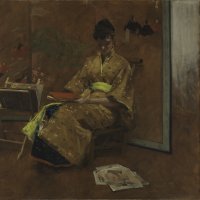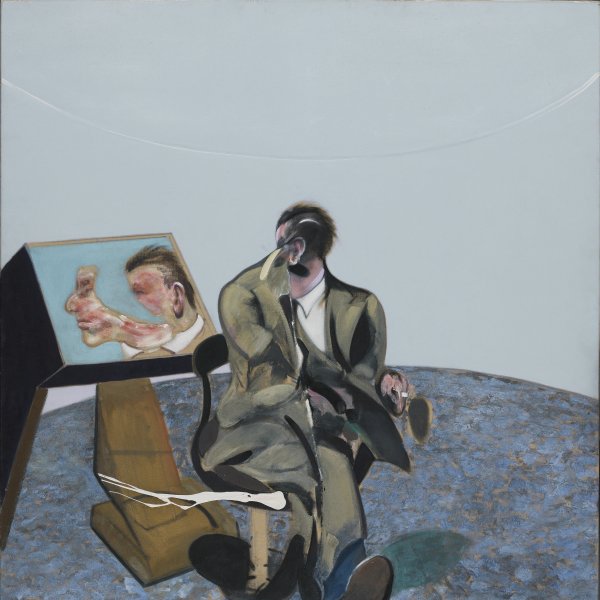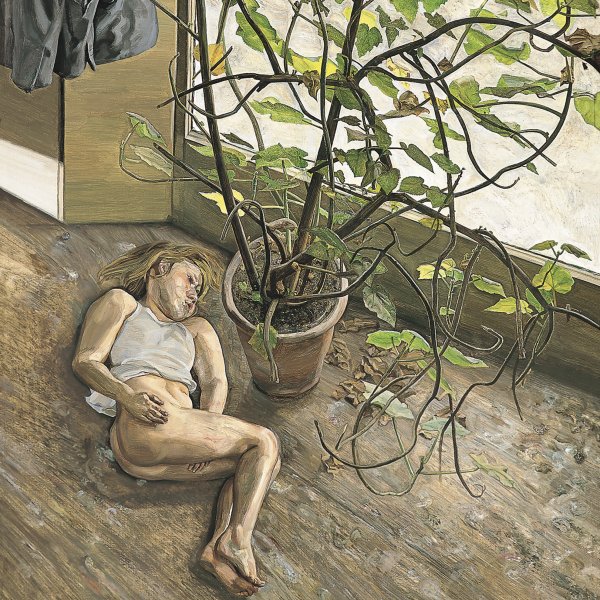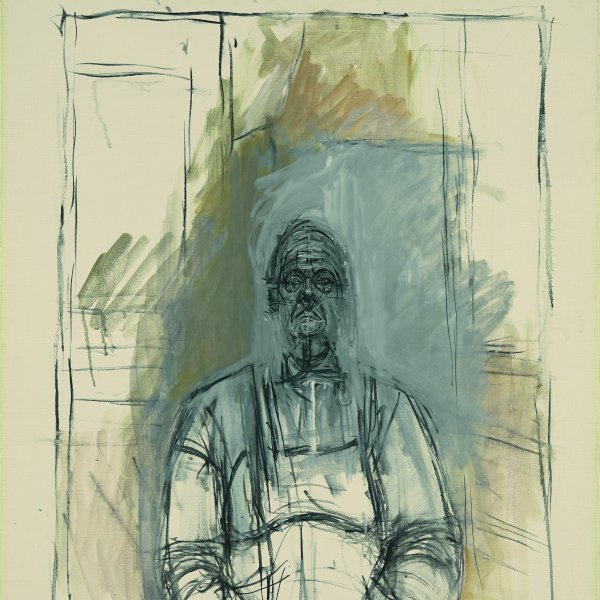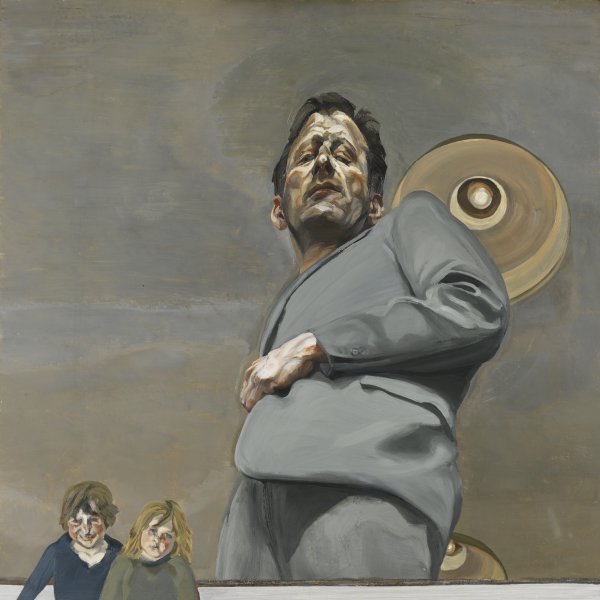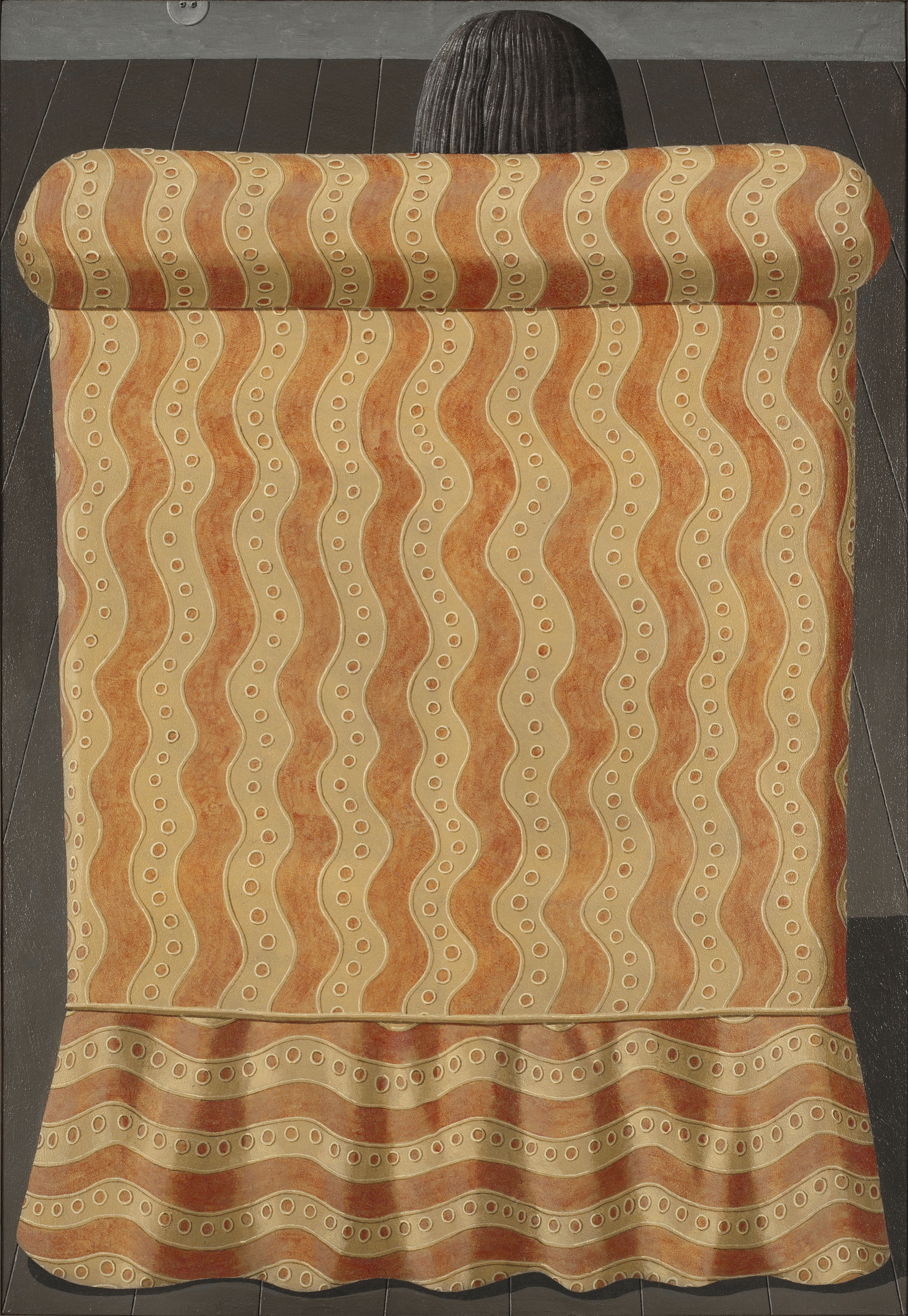Armchair No. 2
1967
Acrylic and sand on canvas.
200 x 140.5 cm
Museo Nacional Thyssen-Bornemisza, Madrid
Inv. no.
556
(1978.93
)
Room 52
Level 1
Permanent Collection
The painter Domenico Gnoli was an unusual figure in the art world of the second half of the twentieth century. He spent most of his short life away from Italy, his country of birth, and during his final years lived in the village of Deià in Mallorca with his wife Yannick Vu. His perfectionist and unsettling pictures, half way between abstraction and figuration, between realism and Pop Art, reveal small details of objects which are shown enlarged, as if seen through a magnifying glass. It matters not whether the subject is a button, a lock of hair, the knot of a tie or a piece of fabric — his pathological eye accords them an almost magical presence and steeps them in a new symbolism that highlights the identity of the insignificant and bears witness to human solitude.
On occasions Gnoli stated that his intention was to link up with the tradition of the Italian Quattrocento by representing a reality that is intact. He confessed in an interview, “I always use elements which are given and simple; I never want to add anything or to eliminate. I have never any desire to deform; I isolate and I represent. My themes come from the present, from familiar situations, from daily life. Because I never intervene actively against the object, I feel the magic of its presence.”
In the present Armchair, painted in Mallorca in summer 1967, Gnoli presses up against the picture plane the back of an armchair above which part of the head of a seated female figure pokes out. The motif is inspired by a nineteenth-century sculpture that caught his attention in the Galleria Nazionale in Rome. As Yannick Vu recounts, Gnoli “notices a rather academic 19th century sculpture by Giovanni Focardi called Sweet Rest, a young lady sleeping in an armchair, a quite banal and sentimental intimist subject. He turns around it and invites us to observe it from his viewpoint. Suddenly the sculpture becomes mysterious.” In the painting the chair fills most of the surface of the canvas and the huge format allows him to enlarge its proportions to bigger than life size, giving the composition a certain abstract air.
Paloma Alarcó
On occasions Gnoli stated that his intention was to link up with the tradition of the Italian Quattrocento by representing a reality that is intact. He confessed in an interview, “I always use elements which are given and simple; I never want to add anything or to eliminate. I have never any desire to deform; I isolate and I represent. My themes come from the present, from familiar situations, from daily life. Because I never intervene actively against the object, I feel the magic of its presence.”
In the present Armchair, painted in Mallorca in summer 1967, Gnoli presses up against the picture plane the back of an armchair above which part of the head of a seated female figure pokes out. The motif is inspired by a nineteenth-century sculpture that caught his attention in the Galleria Nazionale in Rome. As Yannick Vu recounts, Gnoli “notices a rather academic 19th century sculpture by Giovanni Focardi called Sweet Rest, a young lady sleeping in an armchair, a quite banal and sentimental intimist subject. He turns around it and invites us to observe it from his viewpoint. Suddenly the sculpture becomes mysterious.” In the painting the chair fills most of the surface of the canvas and the huge format allows him to enlarge its proportions to bigger than life size, giving the composition a certain abstract air.
Paloma Alarcó

